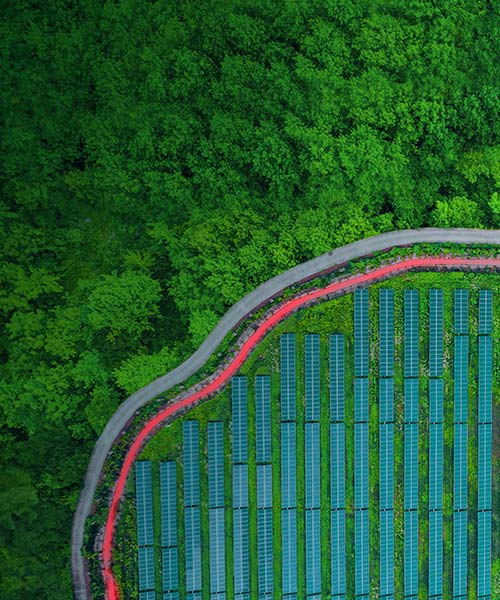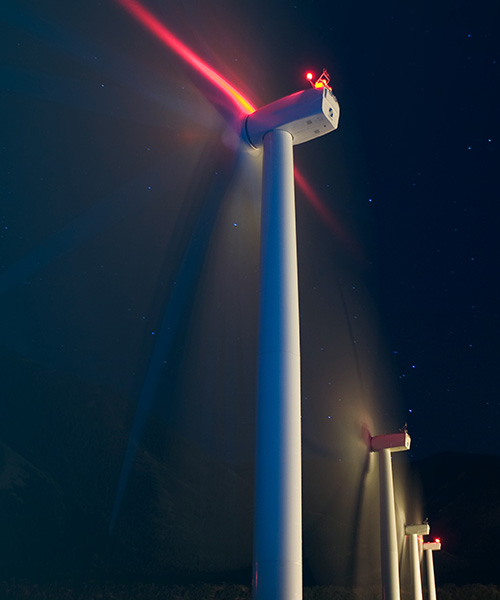May 23, 2023 • 4 min read
From Ambition to Reality: Five things we need to do to broaden how value is defined
How do we get to a world where community equity is equally weighted with financial objectives for net-zero infrastructure projects? And project success means value is added to communities, not subtracted?
In our ground breaking From Ambition to Reality series, we proposed five key shifts in thinking about and approaching projects on the road to net zero.
The first shift, broadening value, outlines how projects can move from just delivering financial value to delivering social, economic and environmental value. And how the value of projects – money, jobs, clean environments – can be shared amongst all stakeholders.

So how do we make this a reality? We explore five things we need to do to broaden how value is defined.
1. Strengthen the human capacity
This means a huge expansion of the energy sector workforce, with new people and skills. But also, training people from the industries impacted by the energy transition to help fill the roles needed to deliver and operate net-zero solutions.
Upstream oil and gas workers could use their skills on carbon capture use and storage projects. Offshore oil rig designers and constructors on offshore wind turbines. Oil refinery workers on biofuels and hydrogen production plants. Project contracts can be designed to have built-in training and skill requirements to ensure that impacted communities share in employment opportunities.
“The current energy workforce will be a huge asset and we need to make use of their valuable experience in design and construction,” says Paul Ebert, Group Director, Sustainability and Energy Transition Leadership.
“We’re reskilling our people on our digital learning platforms, leveraging transferable skills and transforming our workforce from traditional energy, chemicals and resources experts to experts in today’s low-carbon energy infrastructure and technology.
“After all, the scale of the task is huge and net-zero success depends on powering the energy transition with the right people, with the right skillsets to make it happen.”
2. Work out what matters to communities
Communities will view value differently. Some may prioritize the landscape, others the protection or integration of traditional ways of life. Environmental and social science experts must be integrated into projects from the outset. And they must be empowered to strongly influence project development criteria, weighting ESG objectives accordingly from project commencement.
“Getting to net zero is, in large, an infrastructure challenge and many communities will see significant change. It’s important to keep communication lines open and honest from the start of project development to the end, when the asset is up and running,” says Ebert.
We must work to understand what matters to the communities our projects are working with, and for. Benefits like enhanced public health and education services, social infrastructure, job security and affordable housing are tangible and measurable means of adding value to such communities.
3. Accelerate approval and regulatory processes
As the pace and complexity of projects increase it’s important that the rigor and quality of the regulatory processes stay high.
“Governments have a significant role to play and can usher in this change and create certainty in and for the clean energy sector. They can underwrite investments, underpin clean energy markets, set low carbon targets to motivate the private sector and enable the investment needed to flow through their policies,” says Ebert.
“However, this needs to be transparent so that people keep trusting in governance processes and accelerate the development of low carbon projects needed for the future.”
4. Invest with foresight
Developing the low carbon infrastructure required to get to net zero means identifying land now, for the future.
“This includes corridors of land for pipelines and grid infrastructure. Sites for terminals and ports. The energy industry needs to identify and set aside zero carbon energy hubs, zoned for large scale development. And do it sooner rather than later, to make sure we can access them. This way, delays can be minimized once projects start and reduce disruption to communities,” says Ebert.
But the focus on communities and maintaining people’s trust must be maintained. And without adequate input from communities and interest groups into design and delivery, these projects will face barriers.
“We need to involve people who’ll be impacted by the infrastructure or transition in the process. We can encourage communities to engage with projects and empower their participation in the change. But the industry must work responsibly: consulting with broad stakeholders in transition planning, including project siting and zoning.”
5. Leave no one behind
The speed and development of the COVID-19 vaccine was miraculous, but its distribution was far from perfect. But we can all learn from this. If developed and developing countries work together on net-zero solutions, nations can transition away from high-emissions alternatives.
“It’s important that communities have reliable energy services during and after the transition. Which is why network companies across the world are deploying smart technologies to ensure greater resiliency, security, flexibility, and reliability,” says Ebert.
When it comes to value, the main focus right now is economics. For net zero, this won’t work. Projects need to deliver social and environmental value if communities are going to accept them.
“The journey to net zero will be a challenge unlike anything we’ve seen before, but it is possible. However, it requires a huge shift in the way we not only deliver projects but define the value they bring,” says Ebert.
“If a site seems expensive but has lower environmental impact, we need to widen our view of what we deem to be worth paying for. We must embed environmental, social and governance practitioners into all elements of project development. And it must be authentic.”





